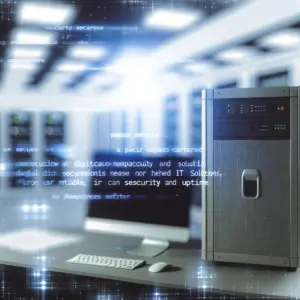Introduction: Choosing between managed IT services and an in-house IT team is a critical decision for any business. This article explores the key differences between these two approaches, helping you identify which option aligns best with your organizational needs and growth strategies. Understanding their operational and financial impacts can empower you to make an informed, strategic choice for your company’s future.
Managed IT Services: The Outsourced Advantage
Managed IT services offer a strategic alternative to traditional in-house IT departments by outsourcing tech responsibilities to specialized providers. Businesses seeking scalable solutions often turn to managed services for several reasons:
- Cost Efficiency: Managed IT providers usually offer fixed monthly rates, enabling businesses to control costs more effectively. This contrasts with in-house IT, where unexpected expenses can arise.
- 24/7 Support: Many managed services provide around-the-clock support, ensuring issues are addressed swiftly, minimizing downtime.
- Expertise and Technology: Providers are typically experts in the latest technologies and compliance standards, offering specialized skills that in-house teams may lack.
- Scalability: Managed IT services offer flexibility to scale operations as needed, perfect for growing businesses needing to adjust resources without delay.
However, the reliance on external suppliers can sometimes be a disadvantage when immediate, onsite attention is necessary. Businesses must weigh the convenience of outsourcing against their need for direct, hands-on management.
In-House IT: Customized Control and Integration
An in-house IT department provides unmatched control over technology management, making it appealing for companies with specific needs:
- Immediate Availability: In-house teams can address issues instantly, without scheduling delays typical in outsourced setups.
- Deep Integration: Employees familiar with the company’s operations can offer more tailored solutions, fostering a seamless integration of tech with business processes.
- Cultural Alignment: Teams that understand and align with the company’s culture can enhance internal communication.
- Security: Some businesses prefer the security of an internal team handling sensitive data, though this can also increase risk if not properly managed.
While providing valuable benefits, maintaining a robust in-house IT department can be costly and resource-intensive, necessitating continuous training and technology investments.
Conclusion: Deciding between managed IT services and an in-house IT team hinges on various business factors, including cost, control, and growth potential. Managed services offer efficiency and scalability, while in-house teams lend personalized tech solutions and immediate availability. By carefully examining these elements, businesses can determine the best path forward, optimizing their operational success and technological progression.



